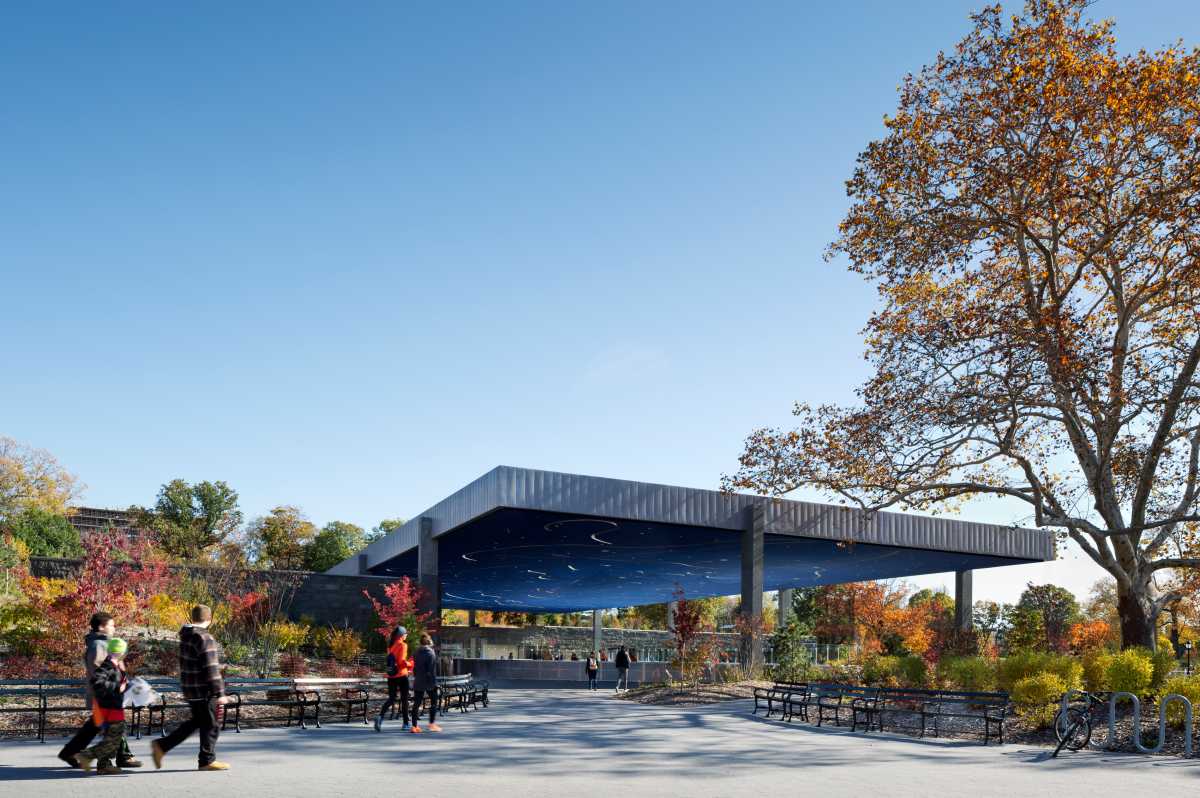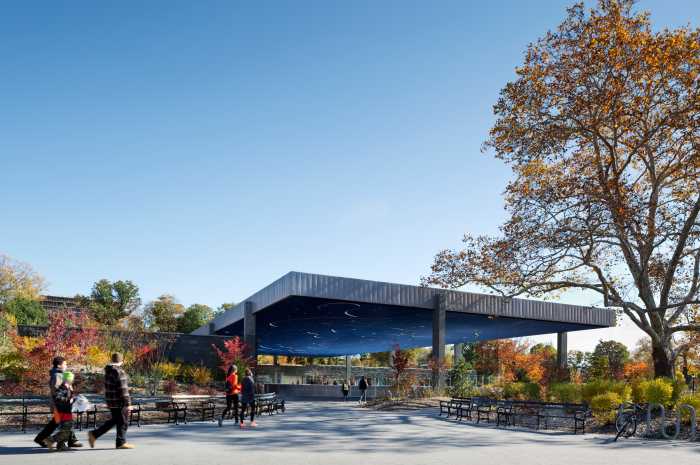
The BPCA’s plan to replace the pavilion at Wagner Park has caught flack from some locals.
BY COLIN MIXSON
Downtown civic leaders are going ballistic over a plan by the Battery Park City Authority to demolish a cherished pavilion in Wagner Park and replace it with a larger, more modern building as part of its storm-resiliency plan for the neighborhood.
A local leader was so persuasive in denouncing the authority’s plan at a meeting of Community Board 1 on April 25, that some members are prepared to go to jail to preserve the cherished park structure.
“This is so offensive — it’s so offensive on so many levels,” said board member Wendy Chapman. “I don’t know if we’ll get arrested for taking petitions in the park, but, for me, it’s at that level.”
The chairwoman of the board’s Battery Park City Committee, Ninfa Segarra, unleashed a withering critique of the authority’s proposal for the Wagner Park Pavilion, which it plans to demolish and resurrect in the form of a more modern and resilient building that’s roughly twice as large.
She portrayed the new building as a veritable wall, which would block cherished sightlines out to the harbor for the sake of providing additional space for a restaurant, while cutting back on community access — not to mention halving the size of bathrooms there.
 Overall, she concluded the new structure was more about generating revenue for the authority than serving community members and enhancing resiliency.
Overall, she concluded the new structure was more about generating revenue for the authority than serving community members and enhancing resiliency.
“Clearly they are trying to commercialize these areas much more,” Segarra told the board.
But many of the facts Segarra presented differ substantially from what BPCA is actually planning, according to authority spokesman Nicholas Sbordone, who stood at the back of the Seaport Museum gallery where the committee chairwoman spoke.
“You name it, and most of what she said was either wrong, or half-true,” said Sbordone, who refrained from correcting Segarra at the meeting for fear of breaking with board protocol.
Most notably, Segarra told board members that the new building would rise three-stories, but according to BPCA vice president of real property Gwen Dawson, the proposed structure is actually two-stories tall, and topped by a rooftop deck with an awning fashioned out of solar panels.
Dawson also refuted Segarra’s claim that the new building would significantly alter sightlines from the inland-side of the pavilion, which conforms the current structures footprint on the ground — and in the air — although she admitted that a gap in the current structure that’s being axed due to resiliency concerns does provide a very limited view of the harbor.
“If you were standing precisely at that point at Battery Place that’s just to the north of the pavilion and facing the water, you’d say, ‘I can’t see what I used to be able to see,’” Dawson said.
That aside, BPCA has taken special care to preserve the park’s spectacular views, largely by enhancing access to the costal parts of Wagner Park through several pedestrian pathways between Pier A and the Museum of Jewish Heritage, Dawson said.
The bathroom is planned to be roughly half as large, a move intended to dissuade non-parkgoers from exploiting the loo there, Dawson said, but that point, along with other aspects of the current proposal, are subject to change following community input.
One thing the authority will have a hard time arguing with, however, is the appreciation locals have for the current pavilion’s architectural merits, according to board member Bruce Ehrmann.
“It’s a very beautiful, very special building. It has had all kinds of praise,” said Ehrmann, who described news of its destruction as “very upsetting.”
The authority’s resiliency project is currently nearing the end of what’s called the “Assessment Phase,” meaning that, while the BPCA has a good idea of what it wants in terms of infrastructure enhancements, pedestrian amenities, and landscaping, it remains unclear exactly how it will look and what it will cost beyond a vague estimate of “10s of millions of dollars,” Dawson said.
The BPCA is expected to begin bidding out contracts for design and engineering studies in about three months, after which board members will have further opportunities to critique and provide feedback on the pavilion.




































